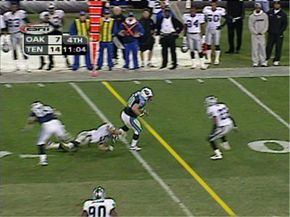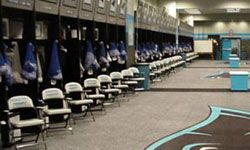Football is a major pastime in the United States. Kids play in the Pop Warner football league, some progress to high school football, some of those play college football, and a very select few play professional football in either the NFL or CFL. This funnel toward greatness continues until the first Sunday in February, when the elite of football's elite play in a game that people all over the world gather to watch: the Super Bowl, the championship game of American professional football.
One of the main objectives in American football -- and a helpful one if you want to score points -- is to gain a first down. In order to get a first down, the offense must gain 10 yards within a series of four plays, or downs. If the offense gains the necessary yards (or more) in four downs or less, the team reverts to first down and the process begins anew until the offense fails to gain ten yards, scores, or turns the ball over to their opponents.
Advertisement
One problem that football players and officials have always had to deal with is exactly how to measure the 10 yards needed to gain a first down. First downs often decide games, but collegiate and professional football officials often measure them using a decidedly antiquated length of metal chain attached between two poles.
Television viewers have had trouble figuring out where the first-down line is in relation to the offense. A small arrow located below the end pole isn't usually visible on your television screen. If you've watched any football games since 1998, however, you've probably noticed that fluorescent yellow or orange line that seems painted on the field from one sideline to the other. In fact, the line is computer generated, representing the exact spot that the offense must reach for a first down.
Sportvision, a company based in New York City, debuted its "1st and Ten" system on during a game between the Bengals and the Ravens, broadcast on ESPN on September 27, 1998. Football fans everywhere rejoiced. Since that first game, Sportvision has continued to provide ESPN, ABC and FoxSports with the ability to enhance their football telecasts with this technology (you can view images from actual games that used the first-down line on their Web site). Other networks use similar technology. In this article, we'll look at how the 1st and Ten system works.
Advertisement

